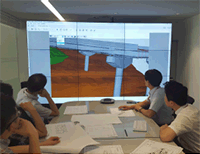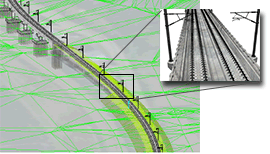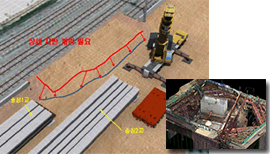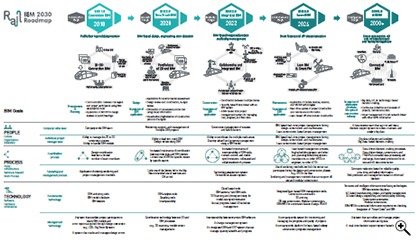Rail BIM 2030 Roadmap
The Rail BIM 2030 Roadmap was developed collaboratively by the Korea Railroad Research Institute, Yonsei University, and the Korea Rail Network Authority for the Korea rail industry. It explains the five phases of the BIM adoption and diffusion strategies from 2018 to 2030 under “level of information utilization in BIM“ for the advancement of railway facilities in the 4th Industrial Age. The five levels discussed below are based on the gradual maturity of the BIM capabilities of the participants taking part in the project. This roadmap development was supported by a grant (17RTRP-B104237-03) from the Ministry of Land, Infrastructure, and Transport of the Korean government.
Download Links
| The English version | August 17, 2018 |
| The Korean version | August 17, 2018 |
Contact
Professor Ghang Lee, Ph.D.Architecture and Architectural Engineering
Yonsei Unversity, Seoul, Korea
glee@yonsei.ac.kr
Benefits

By using BIM from the early planning phase, a systematic and accurate feasibility study is possible. BIM prevents unnecessary rework by reviewing information generated at the early stage of a project. Effective and efficient decision-making can be achieved by utilizing information on risk prevention through 3D visualization, and managing the maintenance of facilities and assets.

BIM models can be superimposed with GIS and cadastral data to allow design review from the early stages of the design phase to consider visualization, surroundings, and cadastral situations. Greater accuracy is possible using the automatic reflection of design changes, as well as the benefits of visualization obtained from a three-dimensional model.

Precise process planning using equipment and construction simulation on the construction site leads to leaner construction and less unnecessary onsite waste. BIM facilitates collaboration between the different onsite trades, making it easier to review clashes and interferences with the different trades. Construction time and costs can be reduced due to the reduced number of design errors and the reduced rework rate.
Six Waves of BIM
- BIM 0.0 Visual BIM: BIM is utilized mainly for the creation of visual materials for public hearings, reports, marketing, and promotions (a.k.a. communication BIM or marketing BIM).
- BIM 1.0 (2D to 3D) Conversion BIM: The use of BIM focuses on the review of design errors through a 2D-to-3D design conversion process.
- BIM 2.0 Two-Track BIM: BIM is applied to parts of a project that are difficult to carry out using the existing 2D method. The remainder of the project is still carried out using the traditional 2D method (a.k.a. parallel BIM).
- BIM 3.0 (Fully) Integrated BIM: All main project participants use BIM throughout a project (a.k.a. full BIM).
- BIM 4.0 Lean BIM: Construction projects are carried out using the manufacturing approach, such as modular construction, lean construction, offsite construction, and construction automation (a.k.a. automation BIM).
- BIM 5.0 Intelligent BIM: Projects are carried out based on informed decision-making using big data and artificial intelligence (a.k.a. connected BIM or linked BIM).
Rail BIM 2030 Roadmap
Please click to the image on the right side of this paragraph to see the Rail BIM 2030 Roadmap and its diffusion strategies based on the PPT (people, process, and technology) framework in detail.
Rail BIM Cycle
- Establish project objectives. As BIM projects are also construction projects, focus on construction-specific objectives (e.g., reducing construction costs, reducing scheduling conflicts, improving safety) rather than BIM utilization.
- Set KPIs for each project objective. Key performance indicators (KPI) must be set to evaluate if a project’s goals have been achieved during and after a project. Examples of KPIs include planned vs. actual costs, the number of defects, and the number of safety-related accidents.
- Establish a BIM use plan by project objective. Establish a specific and effective BIM use plan to achieve project goals. The parties involved in the bidding shall submit a BIM execution plan, which includes a plan to collect and evaluate KPIs during the project, as well as BIM use plans.
- Share BIM project goals and KPIs. If the project goals are shared and the status of a project based on the KPIs is visible to all project participants through an open project dashboard, the project goals are more likely to be achieved.
- Assess achievement of the project goals. When all the requirements for each BIM level are met, the team can proceed to the next level. If not, the same level should be retired based on the lessons learned from the previous projects.
- Report the results and share lessons. The results and the lessons learned should be collected and shared through workshops involving the project participants.
- Update the BIM Guide. Update the BIM guide based on best practices and lessons learned from the projects.

